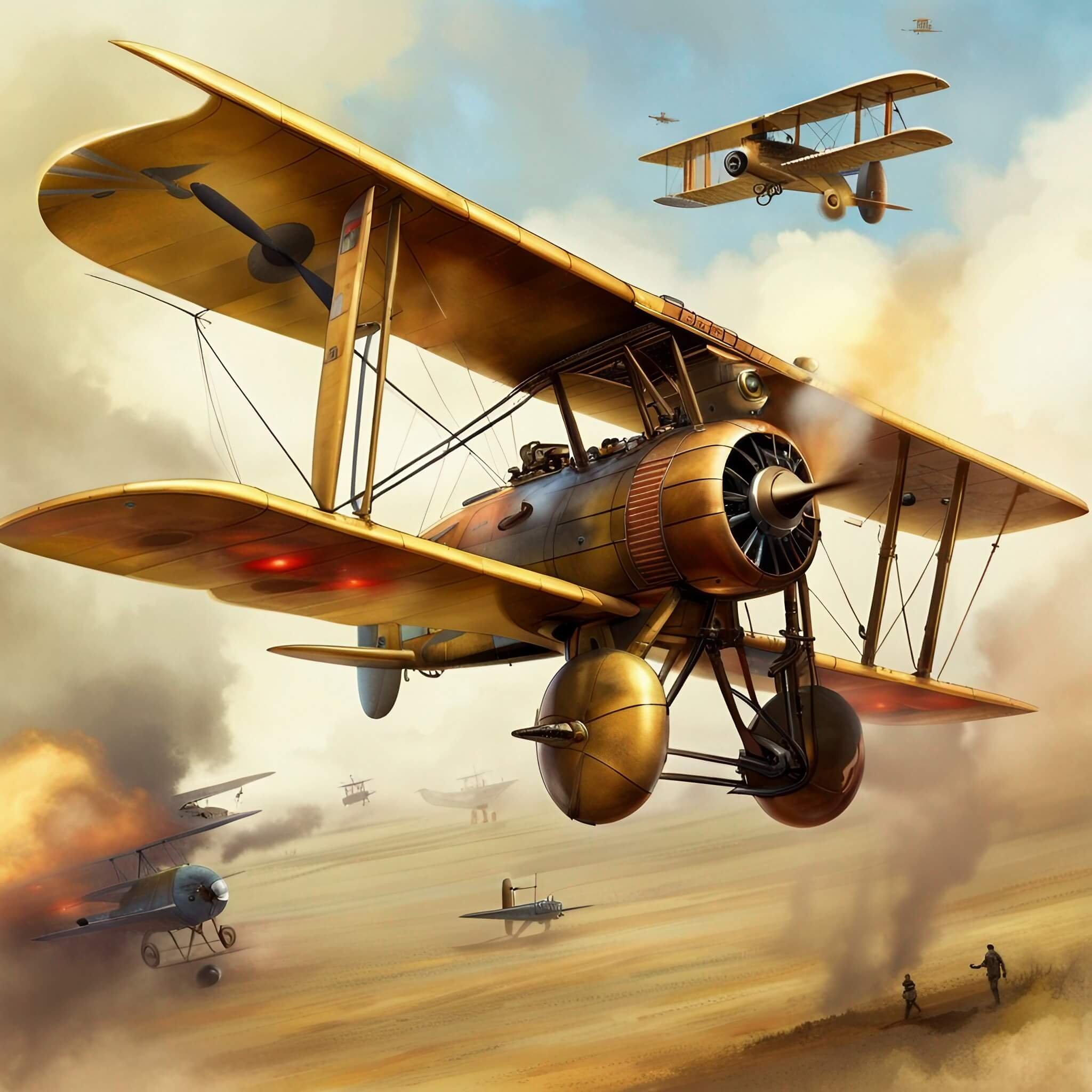Red 10, Standing By...
This photograph of WWI German air-combat pilot, Lieutenant Laumann, may give us a clue as to how the German's were so effective in combat - with a little help from an R5-series astromech droid!
The R5-series astromech droid was a line of low cost astromech droids built by Industrial Automaton. Based upon the success of prior astromech models, such as the wildly popular R2-series, Industrial Automaton intended the R5-series to cater to budget buyers at the cost of some functionality.
Often attributed to their inexpensive construction, droids of this series were plagued by a number of design flaws—most obviously, a sullen demeanor and sharp attitude resulting from deficiencies in the machine's personality matrix. Media outlets soon picked up on these errors: Mechtech Illustrated called the R5 model "a meter-tall stack of the worst business decisions you could possibly want." This photograph, however, may offer insight to this particular trait of the R5. Perhaps, it was the Germans who first re-programmed the R5s, modifying the personality matrix to echo the German military society.
Lieutenant Laumann was part of the Jasta 10 squadron, nicknamed "Red 10" by Laumann, himself. The Jasta squadrons were highly successful in their missions. Most notably, was Jasta 2, which contained the famed, Manfred von Richthofen, commonly known as the Red Baron.
The Jasta squadrons followed a strict code of fundamental tactics of air-combat called The Dicta Boelcke, formulated by the first great German flying ace of the First World War, Oswald Boelcke. The code consisted of eight rules that the fighter pilot must abide by in order to gain and keep an advantage in combat.
The Dicta Boelcke was programmed into the R5 units and they would use their equipment to "encourage" the pilot to adhere to them. The available equipment on the R5 units were:
* Retractable heavy grasper
* Small circular saw
* Acoustic signaler
* Holographic projector/recorder
* Fire extinguisher
Stories passed down indicate that "Red", possibly, a nickname for the R5 unit, would jab the pilot in the back if they were going astray from the code of conduct. The signaler and the holographic projector would provide excellent communication between pilots, giving them tactical advantages. The use of the fire extinguisher is obvious, but, the need of a small circular saw during flight remains a mystery!
Some have speculated that astromech droids are responsible for the timing mechanism allowing a pilot to shoot through the propeller without destroying it, a major advancement in air-combat technology. Work is underway to evaluate this and investigate how astromech droids were first introduced into the Great War!
Evidence #: ISWWR0000037
Submitted by: S. Wicks
The Dicta Boelcke:
1. Try to secure the upper hand before attacking. If possible, keep the sun behind you.
2. Always continue with an attack you have begun.
3. Only fire at close range, and then only when the opponent is properly in your sights.
4. You should always try to keep your eye on your opponent, and never let yourself be deceived by ruses.
5. In any type of attack, it is essential to assail your opponent from behind.
6. If your opponent dives on you, do not try to get around his attack, but fly to meet it.
7. When over the enemy's lines, never forget your own line of retreat.
8. Tip for Squadrons: In principle, it is better to attack in groups of four or six. Avoid two aircraft attacking the same opponent.

